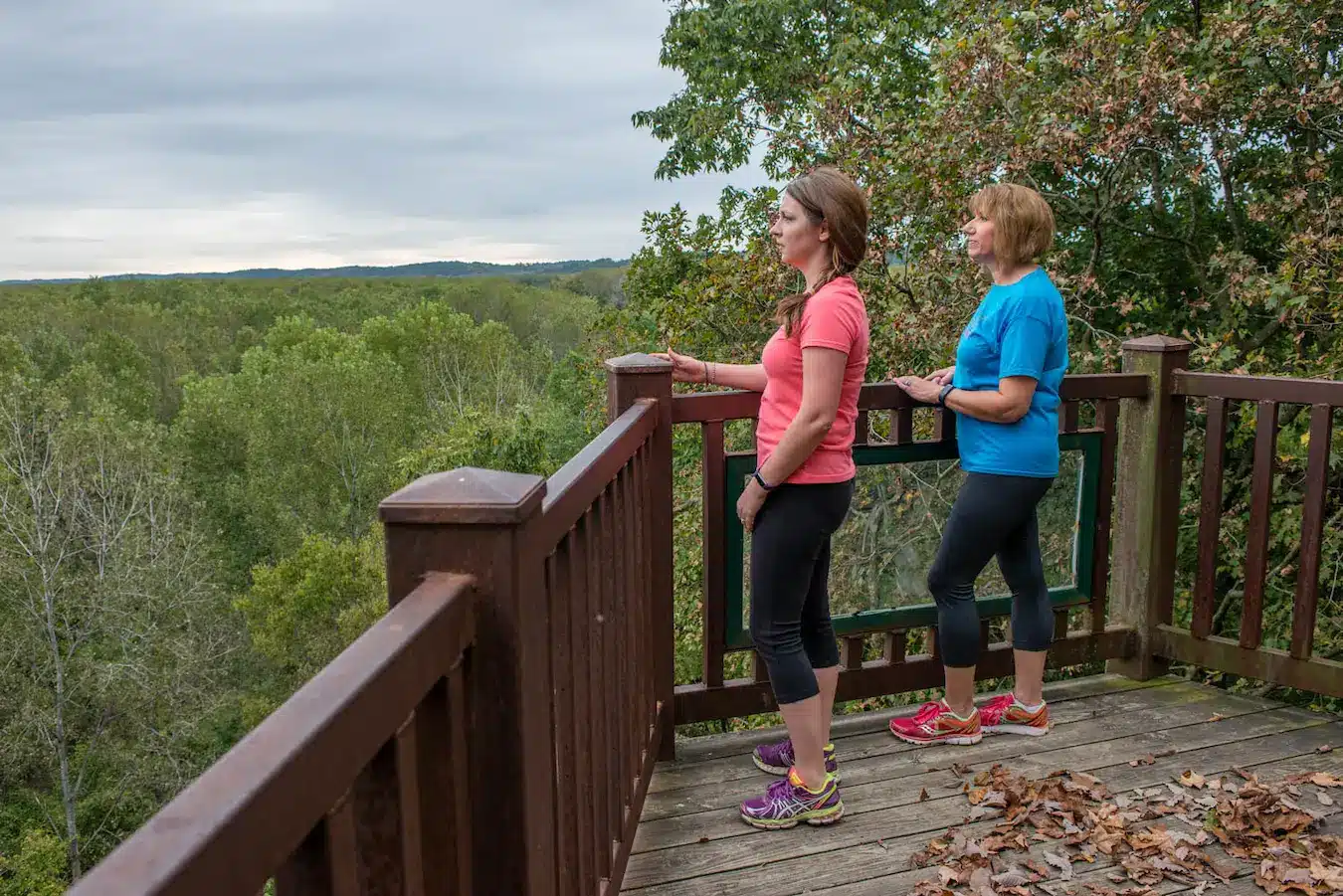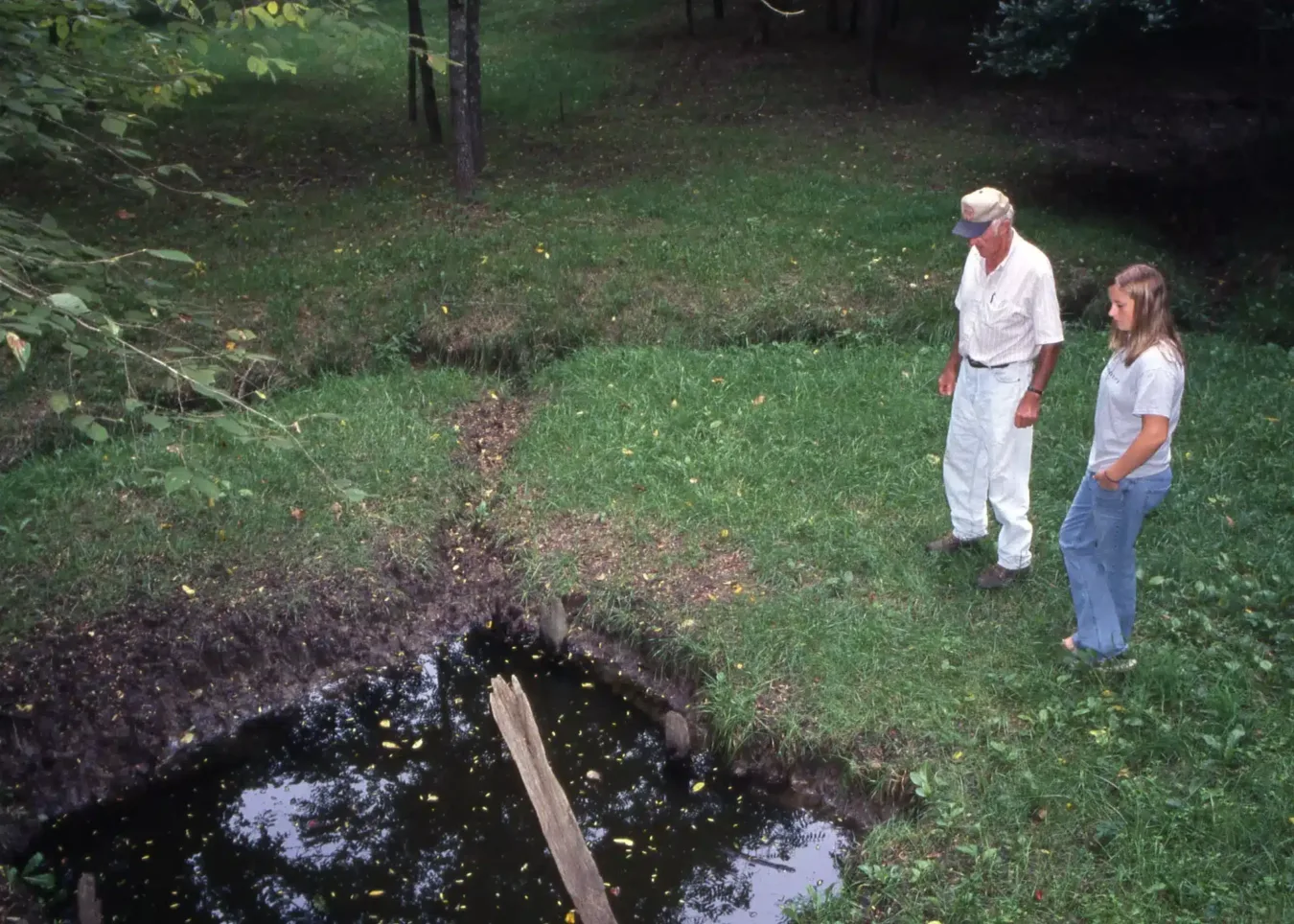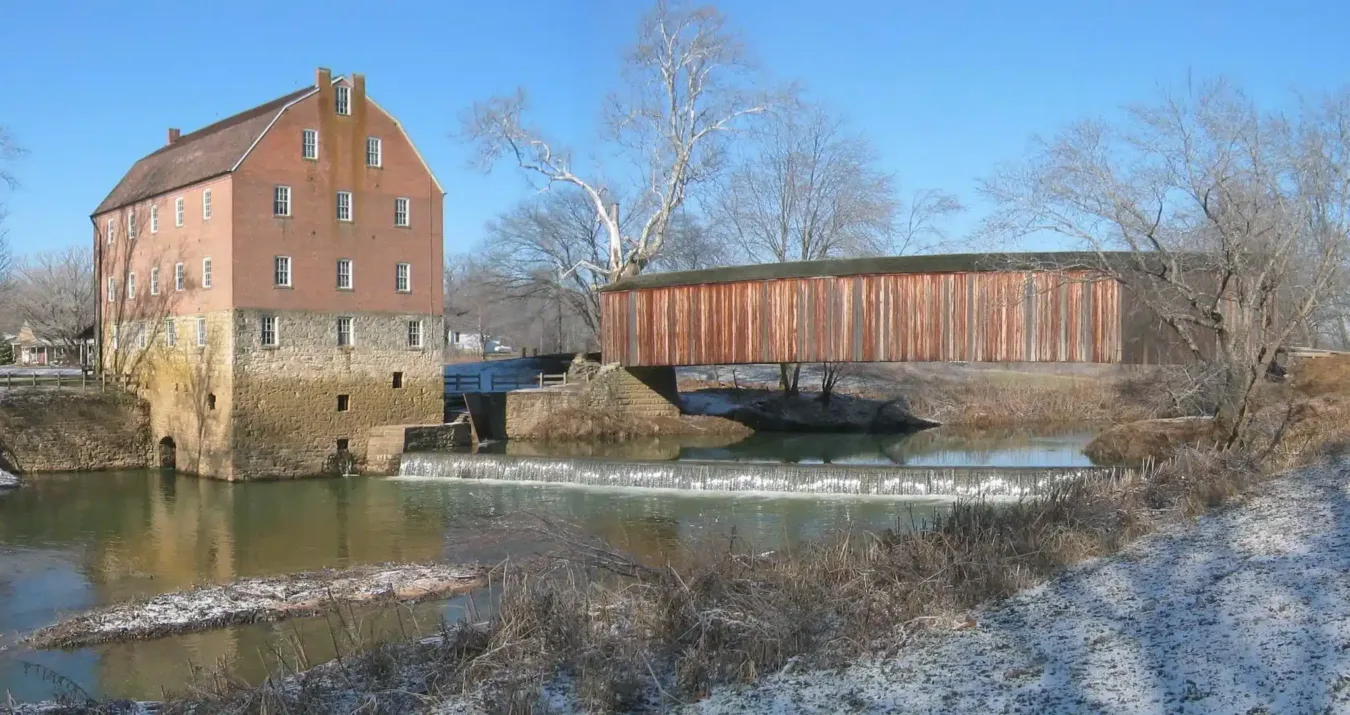Osage Village State Historic Site has a unique part to play in helping Missourians understand their state and the Native people that lived at this site. Visit the Brown Site where a wealth of recovered artifacts now documents the village.
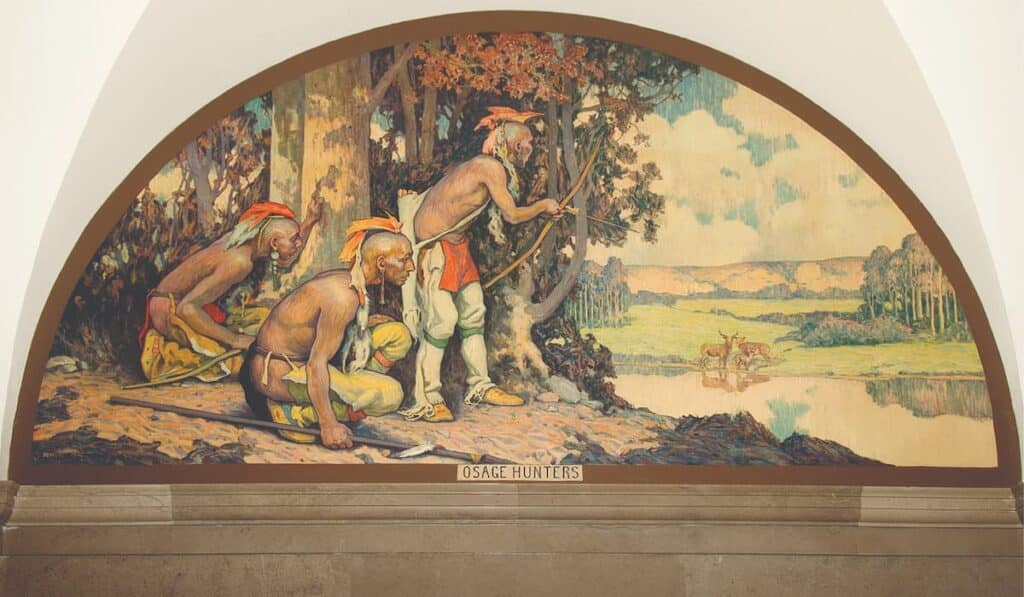
Photo by Lloyd Grotjan
THE TRIBE MOST FEARED AND RESPECTED by other natives when French-speaking explorers and traders first came to Missouri called themselves the Ni-U-Ko’n-Ska, “Children of the Middle Waters.” Among themselves, in humility before their Wah’Kon, or “Mystery Force,” they said they were the “Little Ones.” The first written record of this tribe derives from the expedition of Louis Jolliet and Father Jacques Marquette down the Mississippi River in 1673. Soon after, the world at large would come to know of this proud and powerful people: the Osage.
Their principal villages were at a junction of waters in western Missouri that they called the Place-of-Many-Swans. This locale is where the streams we know today as the Marmaton, Little Osage, and Marais des Cygnes come together to form the Osage River in Vernon and Bates counties. The Osage were lords of the prairies and woodlands from the Missouri River to the Arkansas River, and from the Mississippi River to the Great Plains. It is startling to consider that this robust, warlike tribe numbering at most ten thousand people so thoroughly dominated such a large region. The land, which they called “The Sacred One,” was certainly rich, and the Osage obviously knew how to live on it.
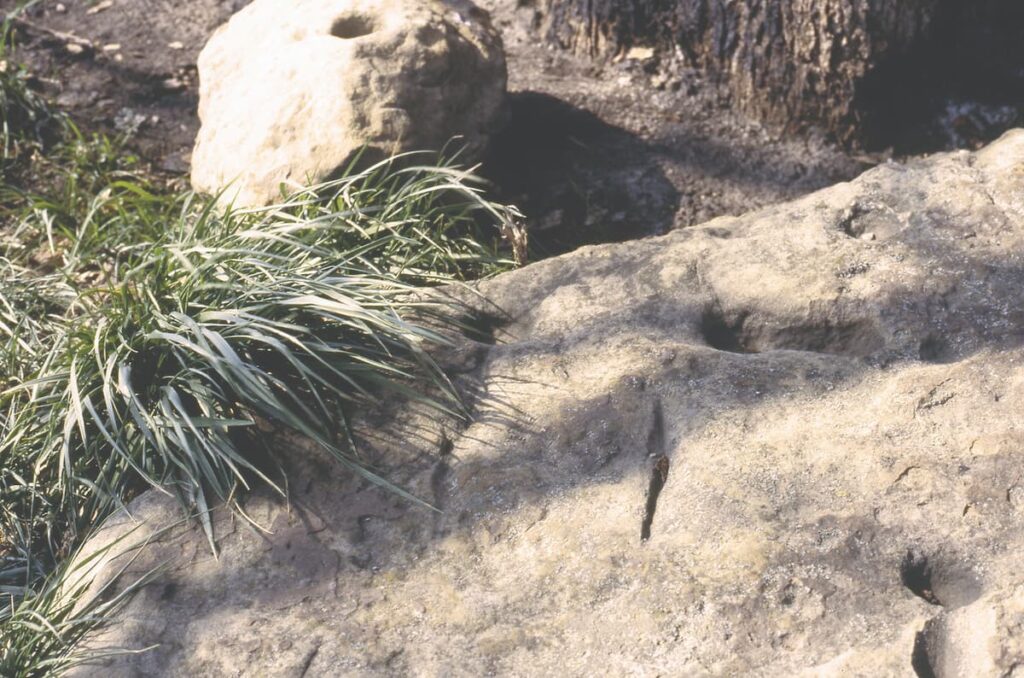
Photo by Anne Larsen
The Osage may have developed as a tribe in the same territory they occupied when the French encountered them. They spoke a language classed as one of the southern Siouan tongues, related to the Quapaw of northeast Arkansas. As a prairie and woodland people, the Osage used the animals and plants of both the forest and the grasslands. They planted gardens of corn, squash, and beans but also hunted for buffalo, bear, elk, and deer. They gathered walnuts, wild grapes, pawpaws, persimmons, and American lotus or yonquapin, and fished the fertile waters of the rivers and oxbow lakes.
The Osage defended their northern frontier from the Sac and Fox, cooperated with the kindred Missouria and Kansa along the Missouri River, fought more or less continually against the Pawnee on the western plains, and thoroughly intimidated the Caddoan tribes to the south along the Arkansas and Red Rivers.
Osage ceremonies, rituals, and modes of social organization were elaborately tuned to the natural environment. By almost any fair measure, the Osage had “strong medicine.” And they apparently looked the part. Almost every chronicler of the early West was impressed by the physical prowess of the Osage. Washington Irving, in his Tour on the Prairies (1832), paints a characteristic word portrait:
Near by there was a group of Osages: stately fellows; stern and simple in garb and aspect. They wore no ornaments; their dress consisted merely of blankets, leggings, and moccasins. Their heads were bare; their hair was cropped close, excepting a bristling ridge on the top, like the crest of a helmet, with a long scalp lock hanging behind. They had fi ne Roman countenances, and broad deep chests; and, as they generally wore their blankets wrapped round their loins, so as to leave the bust and arms bare, they looked like so many noble bronze figures. The Osages are the finest looking Indians I have ever seen in the West.
The arrival of the earliest French traders from the east and of the first stray horses from the southwest probably did not affect the Osage as drastically as the tribes farther west on the plains. Neither the French, the Spanish, nor the British could contest the power of the Osage in their domain. Instead, the Osage were prime trading partners, supplying huge quantities of furs and also captive Indian slaves. Until the nineteenth century, the Osage accounted for over half of the total trade in furs on the Missouri River. The French and Spanish profited from the trade, valued the Osage as buffers between each other and the British, and closed their eyes to the frequent robbing of traders or the killing of weaker Indians and even whites who strayed into confrontations with the “Imperial Osages.”
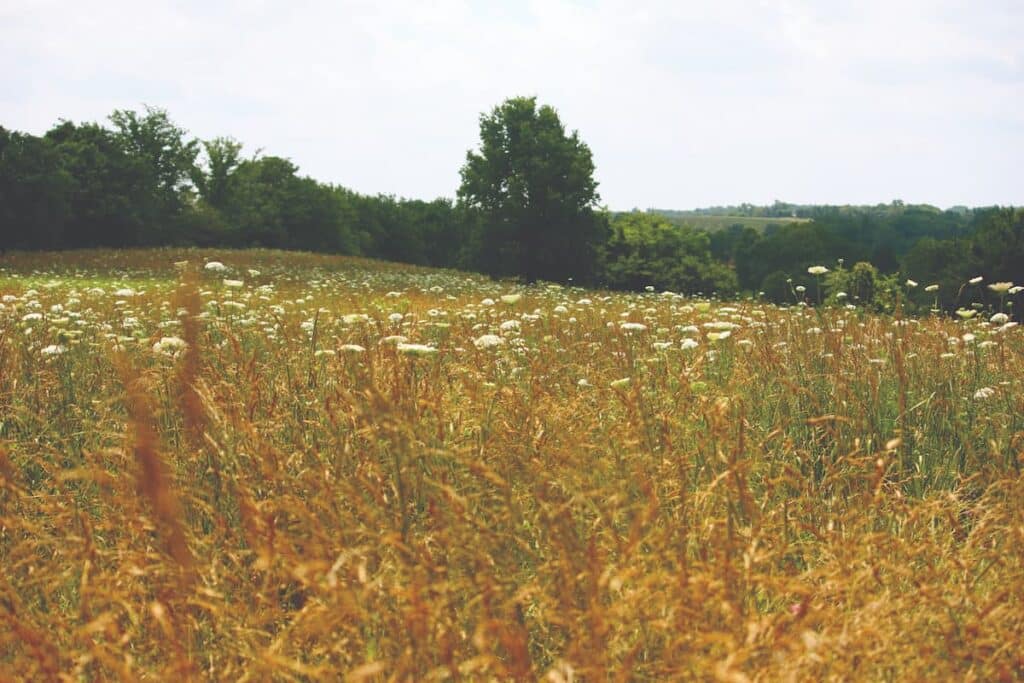
Photo Courtesy of Missouri State Parks
For their part, the Osage tolerated the small infringements of French settlements along their largest rivers, occasionally punished offending settlers or traders, and even adopted a number of stray whites as semi- permanent guests in their villages. They relished the trade that brought them metal tools and weapons, gradually becoming more and more dependent upon it.
When the young United States bought the territory of Louisiana from France in 1803, the old Osage way of life was doomed. American settlers, more aggressive and numerous than French villagers and more persistent and tenacious than French traders or Spanish commandants, pressed hard upon Osage lands. Starting with a treaty in 1808, the Osage began a series of dignified retreats that withdrew them step- by-painful-step from eastern Missouri, then from western Missouri into Kansas in 1823, then into southern Kansas, and finally, after the Civil War, into Oklahoma, where they now live. The Osage domain today is but one oil-rich county in Oklahoma: Osage County.
In the vicinity of the rich prairie, river, marsh, and woodland area known by the Osage as Place-of-Many-Swans in present-day Vernon and Bates counties, the Osage occupied several village sites over the course of the many years they lived there. During the period from about 1700, Osage Village State Historic Site. The Osage held sway over a huge territory, including most of what is now Missouri, Arkansas, eastern Kansas, and Oklahoma. On hunting or war expeditions, they wandered even farther not long after they first met the French traders, until about 1775, when they moved a few miles away to the south, the lodges of the Little Ones stood on a high, open hilltop that commands a broad, sweeping view of the winding Osage River valley and surrounding hills and groves. This hill is the highest in a chain of isolated, limestone-capped remnant hills that runs roughly northwest to southeast, sitting between two small tributary streams and pointing toward the Osage River to the north. It is this grass-covered hilltop site that is now preserved as Osage Village State Historic Site.
While living in this beautiful setting with their rich lands arrayed before them, the Osage came to know the white traders and their goods very well, trading for several years at Fort Orleans on the Missouri River.
They met Etienne de Bourgmond, Claude Charles du Tisné, and Bernard de la Harpe, and they welcomed home the warrior who was taken along with other Native Americans to France to be the object of flattering attention from the Gallic nobility. The Osage sent warriors east in alliance with France to help in the bloody ambush of the English general Edward Braddock, and they came to know, though not very intimately, the Spanish commandants after Charles III took suzerainty over Louisiana. They visited the new village growing up on the Mississippi just below the Missouri that the Spanish called San Luis, but which they always referred to as “Chouteau’s town” in deference to their most respected trading partner. During this time, the Little Ones also continued their traditional skirmishes with the tribes that bordered Osage territory, especially the Pawnee on the west. They also carried out their ceremonies of life, hunt- ing in the spring and fall, planting and harvesting their crops, and praying each morning in the predawn darkness as they faced the rising sun.
When the Osage left this home in Missouri, they left no monuments. Soon there was little that might tell the white American settlers of Vernon County that this tall hill had once been the political and cultural cen- ter of an empire extending into four states. This was a domain claimed by a people who called themselves the Little Ones but whom others called giants, an empire even respected by the sovereign monarchs of Europe. The Osage themselves retained memories of the Place-of-Many-Swans but did not come back to visit except as occasional individual pilgrims. In time, domestic cattle came to graze the hill. Farm buildings and watering ponds were constructed. The old village site became, for practical purposes, lost to knowledge.
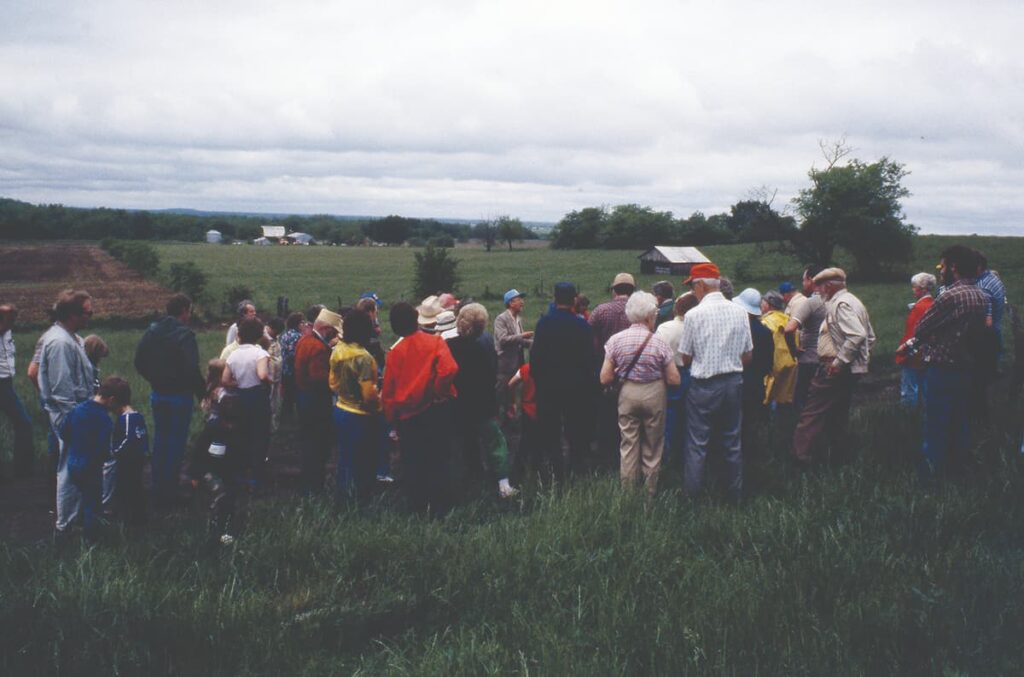
Photo by K.W. Cole
Then in 1941, a young archaeologist from the University of Missouri surveyed the site and confirmed that this hill was indeed a principal village site of the Osage during those historic decades of the eighteenth century. In the archaeological world, the village site took on the name of the Missouri farm family who owned the ground, the Browns. Eventually, further investigations were conducted at the so-called Brown Site—or, even more arcane, at 23VE3, as it was identified in the Archaeological Survey of Missouri. The extent of the site was more precisely defined through excavations over the years, and a wealth of recovered artifacts now documents the village. Here is where the Osage were becoming more and more dependent upon European trade goods, even while maintaining their earlier style of life. Evidence suggests that at its height the village had two to three thousand inhabitants living in about two hundred lodges.
In 1971, the Brown Site was enrolled in the National Register of Historic Places. The Brown family knew its value and safeguarded it from pot hunters. In the late 1970s, the same archaeologist who first con- firmed the site, Dr. Carl Chapman, by this time the dean of Missouri archaeologists, alerted the park division and the Archaeological Conservancy, a national preservation organization, that Mrs. Leslie Brown was interested in seeing the site permanently preserved. Mrs. Brown’s death brought some urgency to the matter, and the Conservancy, after signing a repurchase agreement with the Missouri Department of Natural Resources in 1981, stepped in and purchased the hundred-acre tract. Then in 1984, thanks again largely to the efforts of Carl Chapman, the state legislature appropriated funds to buy the property.
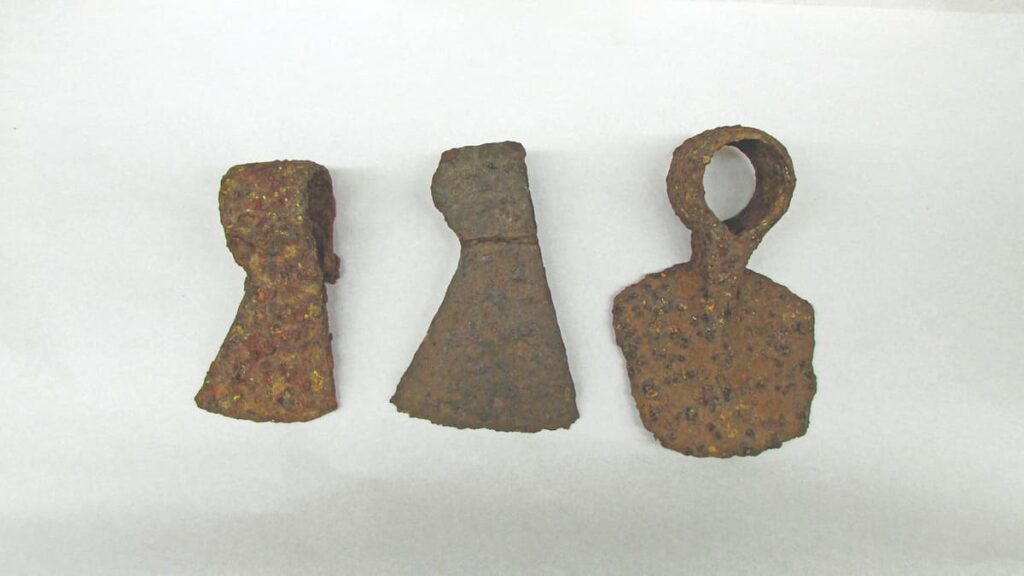
Photo Courtesy of University of Missouri
In its lovely setting with its wealth of buried knowledge and because of its pivotal role in so much early Missouri history, Osage Village State Historic Site has a unique part to play in helping Missourians understand their state. Though the site has been left undeveloped in an effort to preserve what remains, the one-mile walking trail with excellent outdoor exhibits helps the visitor not only to visualize the history of the Osage and the relationship of this place to other nearby Osage and early European sites but also to sense something of what life must have been like in this vibrant Native American village.
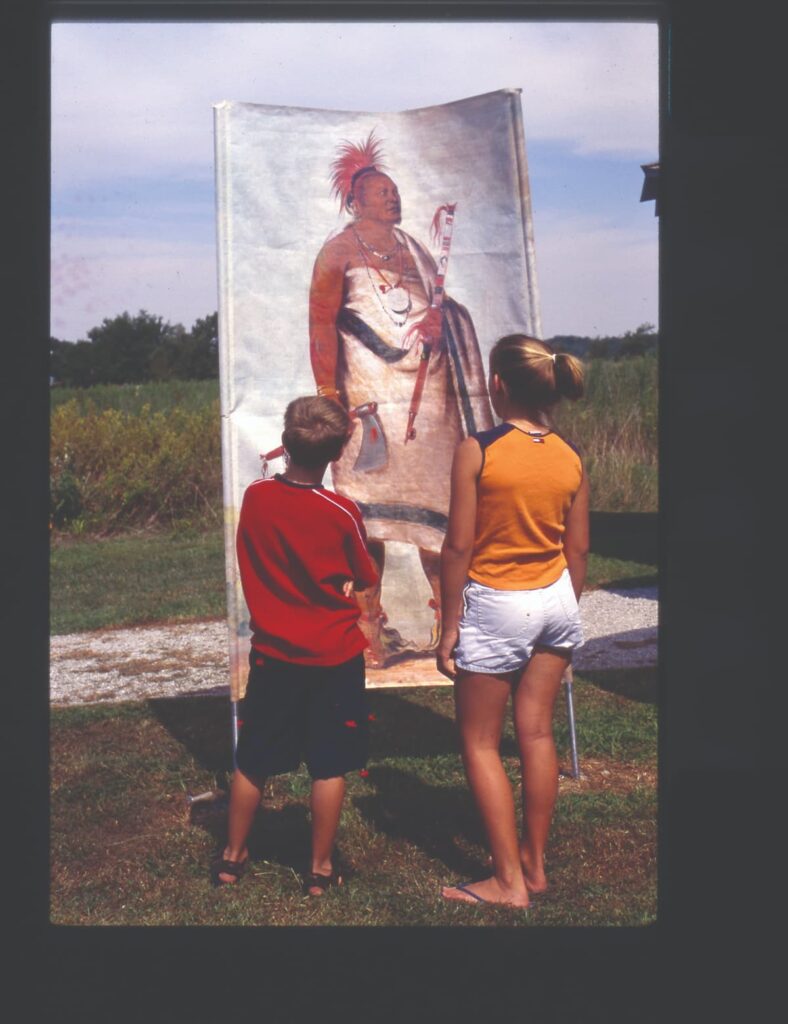
Photo by Jennifer Sieg
The site also brings an unusual burden of responsibility. Even beyond the obvious charge of protecting the resource, there is the memory of the Little Ones to be treasured and nourished. The people who once lived on this spot for most of a century shaped our history, but they remain relatively little known. What we know of them from history was written largely by those who coveted their land or feared their strength. The Osage of old Missouri will never have an opportunity to tell their story in their own way, from their own point of view. We must hope that the stories that are told here would find a measure of approval in the hearts of the Little Ones, the Children of the Middle Waters.

OSAGE VILLAGE STATE HISTORIC SITE • HARWOOD
Featured image: During most of the eighteenth century, Osage Indians had their principal village on a grass-covered hilltop near what they called the Place-of-Many-Swans.
Photo by K.W. Cole
Read more about the Osage and other tribes of Missouri here.
Click here to purchase the Missouri State Parks and Historic Sites book.
Related Posts
Clark’s Hill/Norton State Historic Site
Clark’s Hill is a triple-bonus sort of place, interesting geologically, geographically, and historically. Plus, it provides one of the finest overlook views of the Missouri River valley that can be had. Hike up the hill to stand in the footsteps of Lewis and Clark.
Boone’s Lick State Historic Site
Boone’s Lick State Historic Site is off the beaten track but well worth the trip to visit. We take salt for granted but there was a time that salt was made from boiling down the briny water and then it was shipped to settlements. Learn about salt production at this 50 acre site.
Bollinger Mill State Historic Site
Bollinger Mill and Burfordville Covered Bridge provide you with a step back in time to experience genuine grist milling, a stroll through the oldest covered bridge in Missouri, and a peaceful rest along a tree-lined stream.

